If your idea of the perfect day includes a sunrise jog, a trail hike, or hours spent outdoors, chances are you’re looking for a four-legged companion who can keep up—and maybe even outpace you. While all dogs enjoy a good romp, some breeds are born with the drive, endurance, and energy to go the extra mile—literally. These high-stamina breeds were often developed for demanding jobs like herding livestock, hunting game, or pulling sleds across rugged terrain.
Dogs with exceptional stamina thrive on physical activity and mental engagement. Their lean builds, strong cardiovascular systems, and relentless spirit make them natural running partners and trail explorers. Beyond their physical abilities, their enthusiasm for movement makes them perfect matches for active lifestyles and outdoorsy owners.
Whether you’re training for a marathon or just enjoy long walks in the park, this guide highlights breeds that won’t tire easily. From agile hounds to tireless shepherds, we’re spotlighting those elite canine athletes that can match your pace and fuel your adventures, mile after mile.
Dog Breeds With Exceptional Stamina
1. Dutch Shepherd
The Dutch Shepherd, also known as Hollandse Herder, originated in the Netherlands as a rugged, all-purpose farm dog. According to the AKC, the Dutch Shepherd is an energetic, agile, and intelligent breed.
These medium-sized canines were prized for their independence, intelligence, and ability to herd sheep, guard homesteads, and manage livestock with minimal human direction. Standing about 21.5 to 24.5 inches tall and weighing between 42 to 75 pounds, they sport a muscular build and a dense, brindle coat—either short, long, or rough—that protects them in all weather.
With their alert expressions and agile frames, Dutch Shepherds are naturals in police, military, and search-and-rescue roles today. Their life expectancy ranges from 11 to 14 years.
Exercise
Dutch Shepherds are built for endurance. They require a rigorous daily routine of 90 minutes to two hours of physical activity, combined with mental challenges like obedience drills, scent games, and agility work.
Their stamina is a reflection of their original job of keeping flocks in line for hours. Without this stimulation, they can grow restless or exhibit undesirable behaviors. Ideal activities include tracking exercises, herding trials, and off-leash running in secure areas.
Fact: A Dutch dog expert once described the Dutch Shepherd in 1910 as “bearing a great resemblance to the wolf,” highlighting the breed’s primal resilience and striking appearance.
2. Labrador Retriever
The Labrador Retriever, often affectionately called the “Lab,” is a powerhouse of energy and affection. PDSA states that Labrador Retrievers are a member of the ‘Gundog’ breed group. Originating from Newfoundland and refined in Britain for hunting and retrieving, this medium-to-large breed excels in both land and water-based activities.
Labs typically stand 21.5 to 24.5 inches tall and weigh between 55 to 80 pounds. Their dense, waterproof coats—available in yellow, black, or chocolate—complement their athletic build and aid in cold-water swims.
Signature traits include a wide, expressive face, soulful eyes, and a strong, tapering “otter tail.” Friendly, eager, and high-spirited, Labs are beloved for their social nature and adaptability. Their roots as gundogs highlight their stamina and determination to work tirelessly in the field.
Exercise
Labs require a robust daily routine of at least 80 minutes of exercise to stay mentally sharp and physically healthy. Ideal workouts include swimming, long hikes of up to 10 miles, and extended games of fetch.
Their endurance also allows them to run up to five miles, making them great companions for active owners who enjoy outdoor adventures.
Fact: The Labrador Retriever’s webbed feet and powerful tail are evolutionary adaptations that help them thrive in aquatic environments.
3. Bloodhound
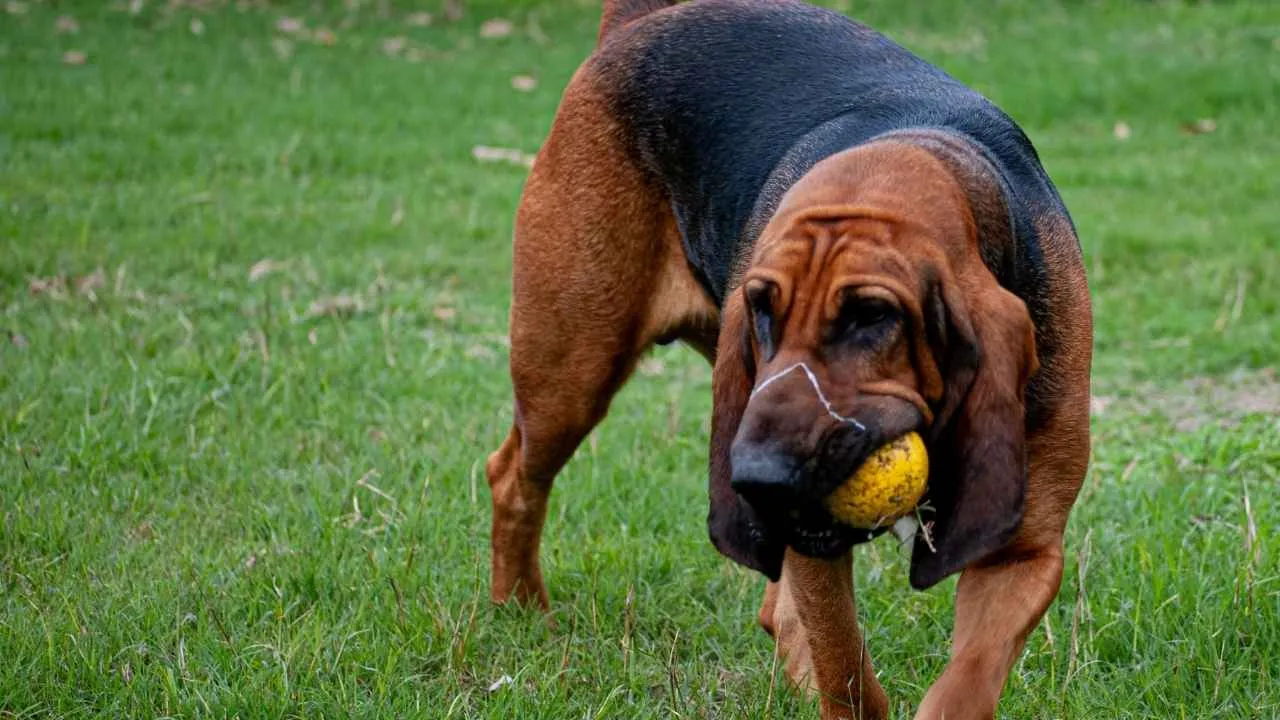
The Bloodhound, also known as the “Sleuth Hound,” is a large, muscular breed celebrated for its unmatched tracking skills and tireless work ethic. Britannica notes that the Bloodhound is an ancient breed, widely regarded as the oldest scent hound.
Originally developed in France and later refined by monks in Belgium, this scent hound stands 23 to 27 inches tall and weighs between 80 and 110 pounds. Its iconic wrinkled face, long ears, and droopy skin aren’t just aesthetic—they help funnel scents to the dog’s nose, enhancing its legendary olfactory ability.
Coat colors include black and tan, liver and tan, and solid red. With a robust ribcage built for endurance and strong legs designed for persistence, Bloodhounds are engineered to follow a trail for miles without fatigue.
Exercise
To maintain physical and mental well-being, Bloodhounds require at least 1 to 2 hours of daily exercise. Long walks, scent-tracking games, or structured play sessions in a fenced yard are ideal. Their high stamina is best engaged with tasks involving their nose, such as search games or tracking trails.
While not hyperactive, they can become destructive if understimulated. Always keep them leashed in open areas—they’ll follow a scent trail without hesitation.
Fact: The Bloodhound is so skilled at tracking that its evidence is admissible in some courts of law.
4. Doberman Pinscher
The Doberman Pinscher, a sleek and powerful breed developed in Germany during the late 19th century, is known for its unmatched loyalty and protective instincts. Louis Dobermann, a tax collector, originally bred this dog for personal protection, creating a vigilant, courageous, and intelligent canine companion.
Recognized for their muscular build, cropped ears, and alert demeanor, Dobermans typically stand between 24–28 inches tall and weigh 60–100 pounds. Their smooth, short coat usually comes in black, blue, red, or fawn, often with rust markings.
As part of the Working Group, these dogs live around 10–13 years and are frequently employed in roles like security, police work, and search and rescue.
Exercise
Doberman Pinschers require robust daily exercise to thrive physically and mentally. A minimum of 70 minutes per day is essential and should blend high-energy activities like running or agility with brain-stimulating tasks such as obedience training or interactive play.
Without sufficient stimulation, Dobermans may exhibit destructive behaviors out of boredom. Their impressive stamina and mental sharpness make them perfect partners for athletic, committed owners.
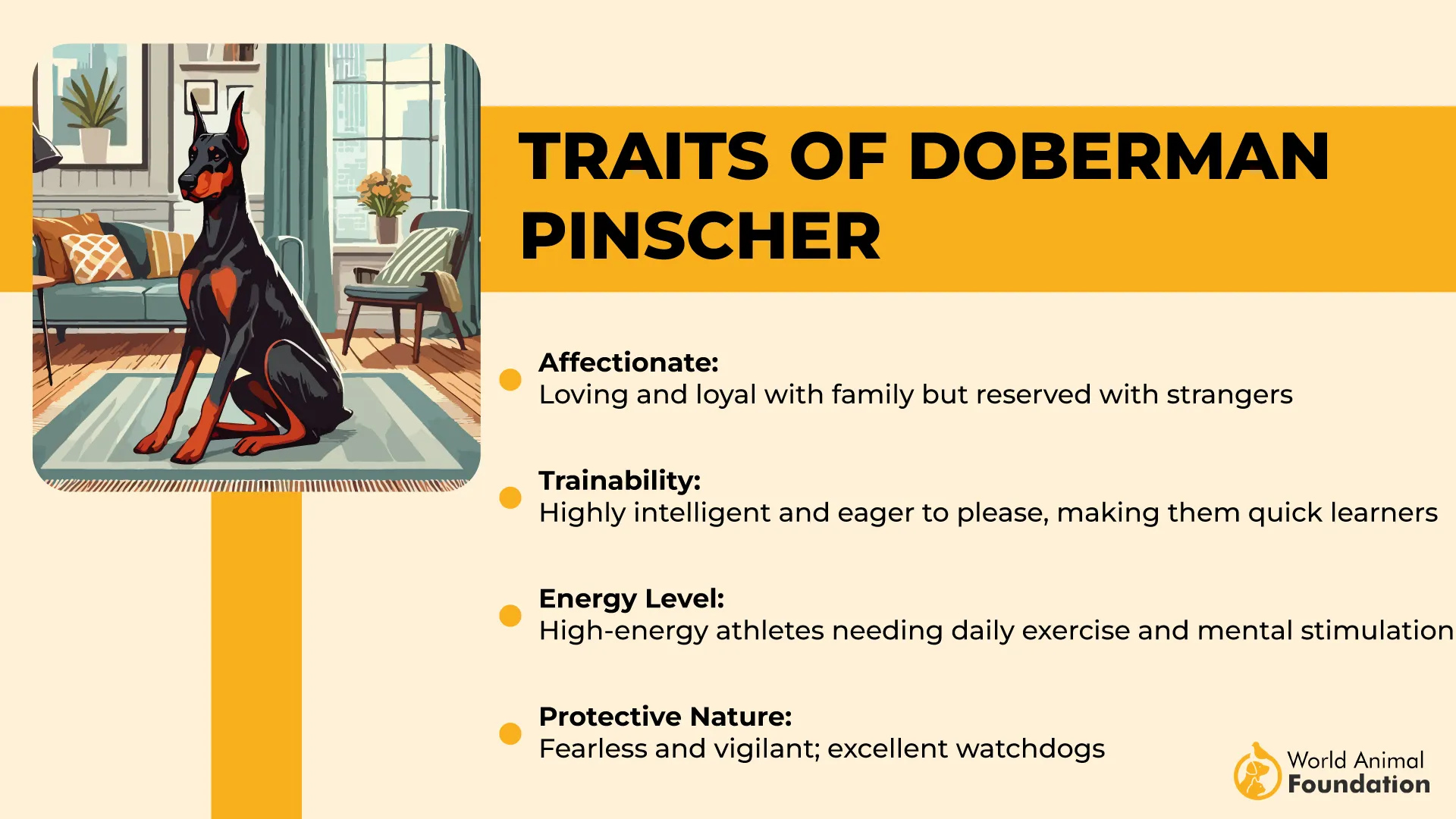
Fact: The breed was created by Louis Dobermann to accompany and protect him during his tax collection rounds across dangerous regions in Germany.
5. Boxer
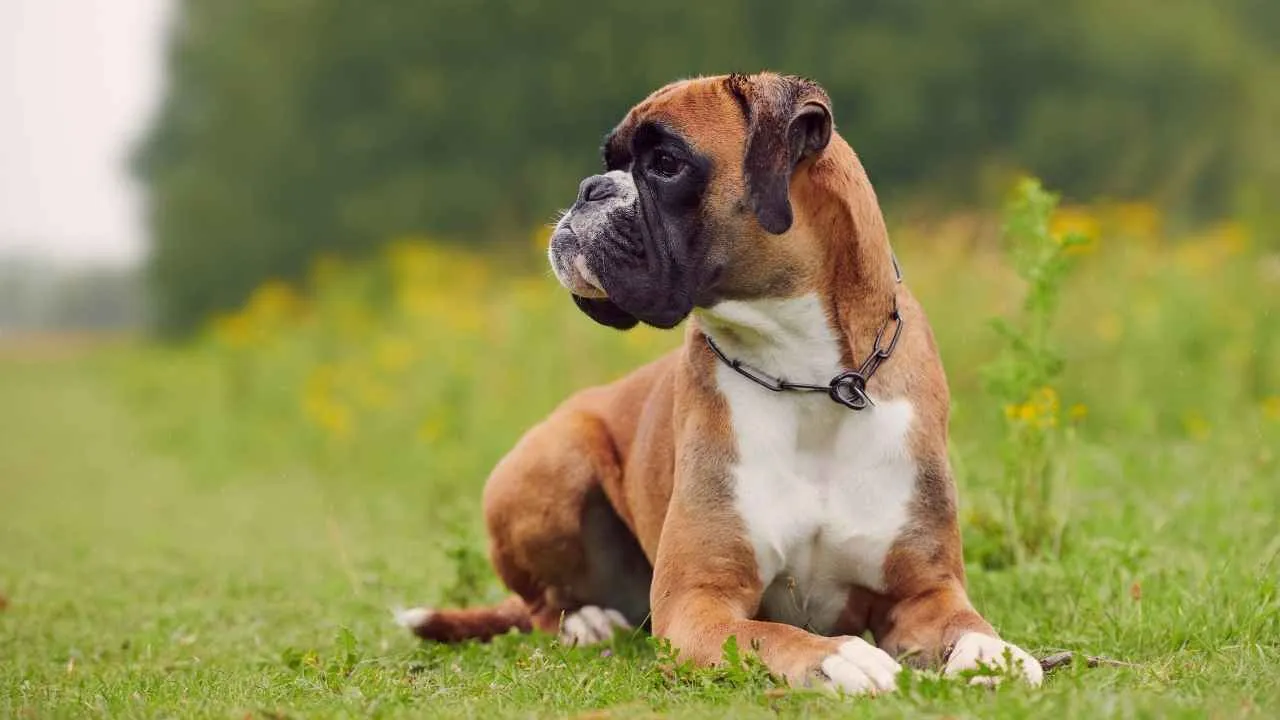
A powerful and spirited companion, the Boxer is a medium-sized breed with German roots, developed from the now-extinct Bullenbeiser and infused with mastiff, bulldog, and terrier bloodlines.
Standing up to 25 inches tall and weighing between 50 and 80 pounds, Boxers boast a chiseled physique beneath a short, sleek coat that ranges in fawn to brindle, often adorned with white markings.
Their distinct underbite, intelligent eyes, and expressive forehead give them a look of constant curiosity. Originally bred for working roles—including cattle handling, military service, and guarding—Boxers are known for their vigilance, courage, and affectionate nature.
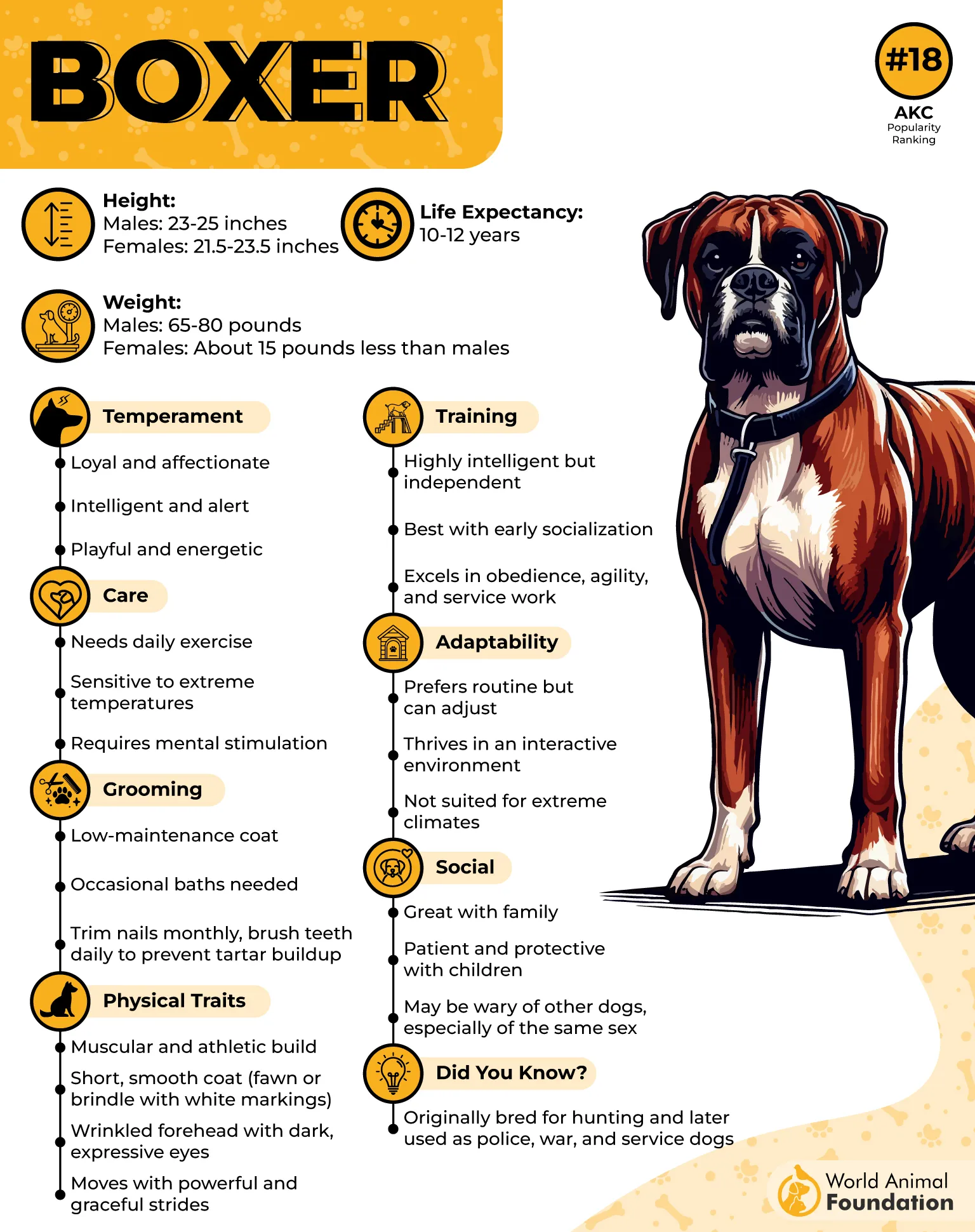
Exercise
Boxers thrive on daily physical and mental activity. These high-energy dogs require at least 90 minutes of exercise every day, including walks, play sessions, and interactive games that stimulate their bodies and minds.
Whether it’s a long jog, a game of fetch, or agility training, Boxers need an outlet for their stamina and enthusiasm. Without it, they may become restless or destructive. Their endurance and athletic build make them exceptional partners for active families and outdoor activities.
Fact: The Boxer’s name is believed to come from the way they “box” with their front paws during play or while defending themselves.
6. Giant Schnauzer
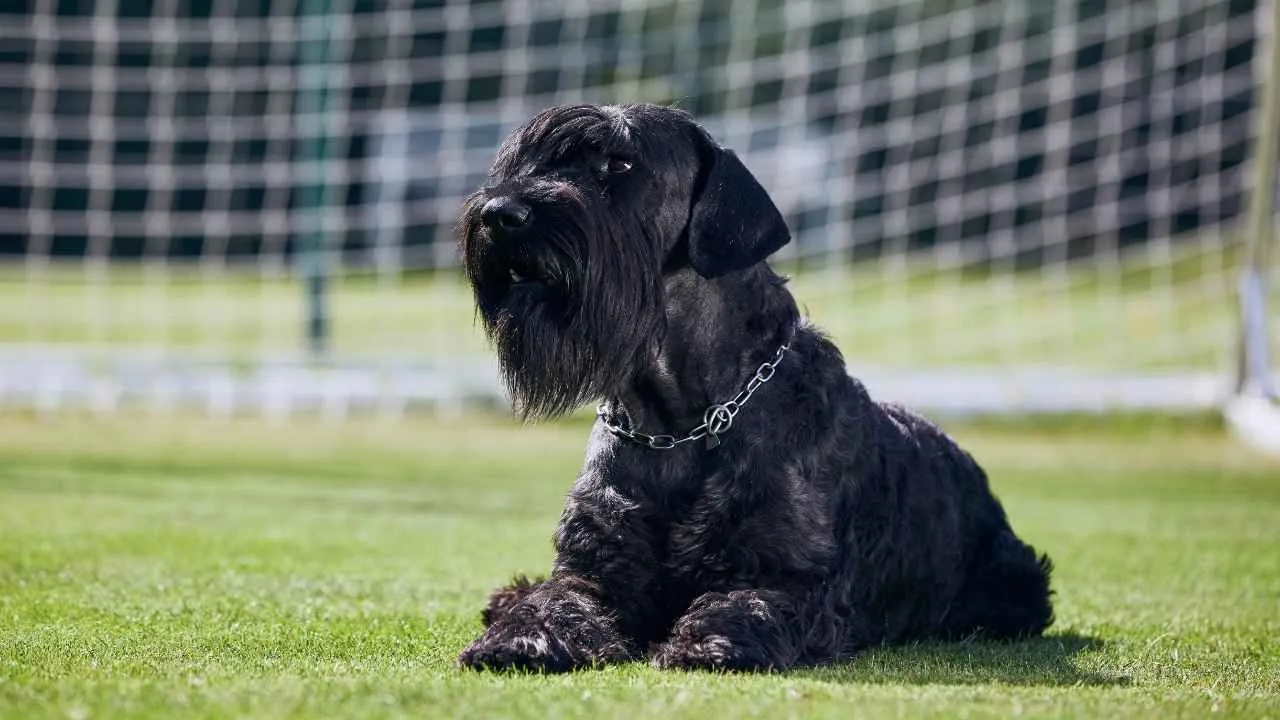
Originating in the Bavarian Alps of Germany, the Giant Schnauzer was developed by crossing breeds like the Great Dane, Bouvier des Flandres, and herding dogs to create a rugged cattle-driving and guarding companion.
Though not “giant” by canine standards, this robust breed can reach 23.5 to 27.5 inches in height and weigh between 55 and 90 pounds.
Their dense, weather-resistant double coat—usually solid black or “pepper and salt”—is matched by a square build and strong, arched neck. Known for their signature bushy eyebrows and harsh beards, Giant Schnauzers exude intelligence and alertness.
Bred initially for farm and later police work, this breed commands attention with its bold presence and protective nature. While deeply loyal to its family, it may be wary of other pets and strangers unless properly socialized from an early age.
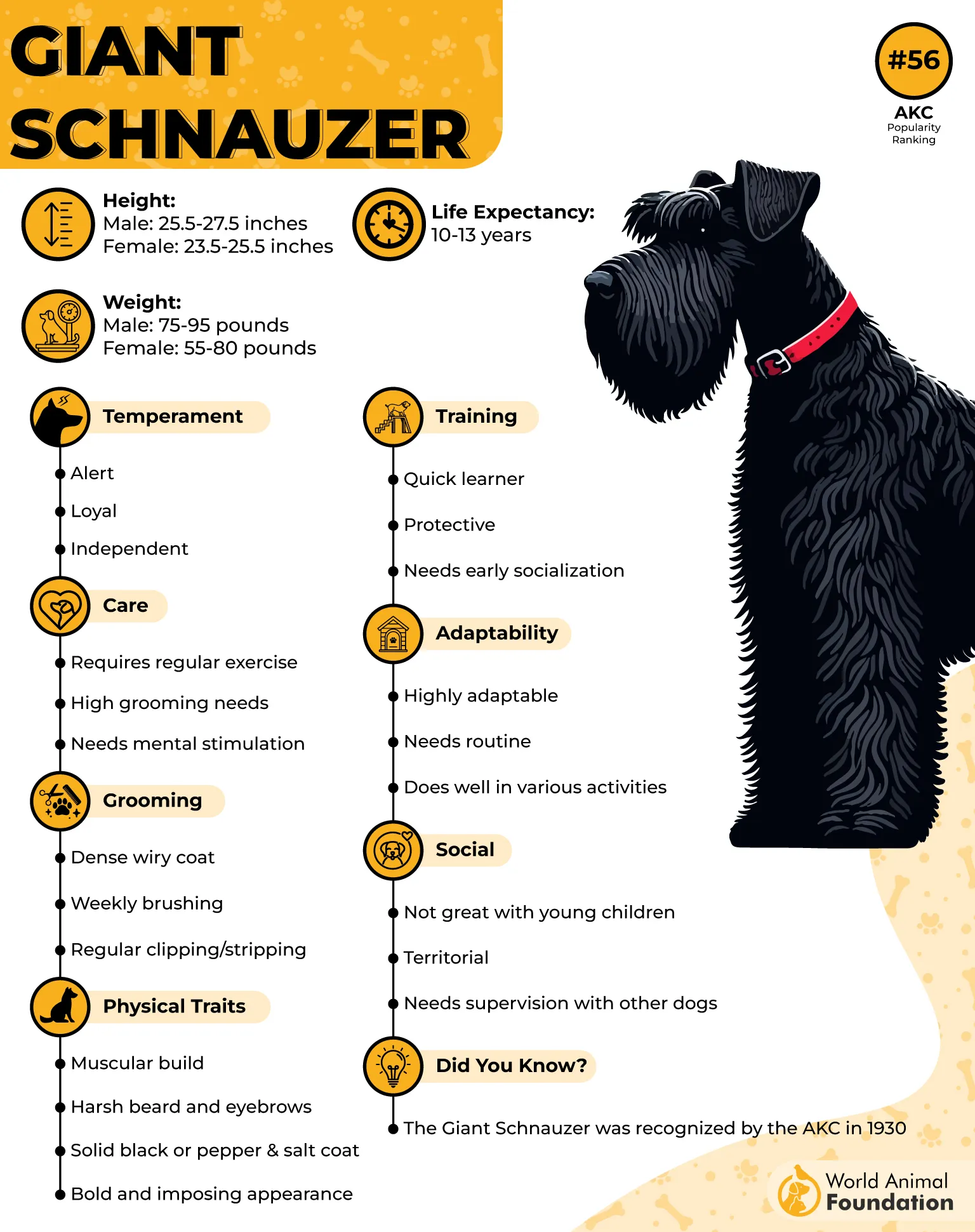
Exercise
Giant Schnauzers are high-energy, working dogs that require at least 2 hours of exercise daily. Activities like hiking, running, and swimming help them release their stamina and reduce destructive tendencies.
Mental stimulation through proper training or puzzle games is equally essential to keep their sharp minds engaged.
Fact: The breed gained prominence after serving as a police dog during World War I.
7. American Pit Bull Terrier
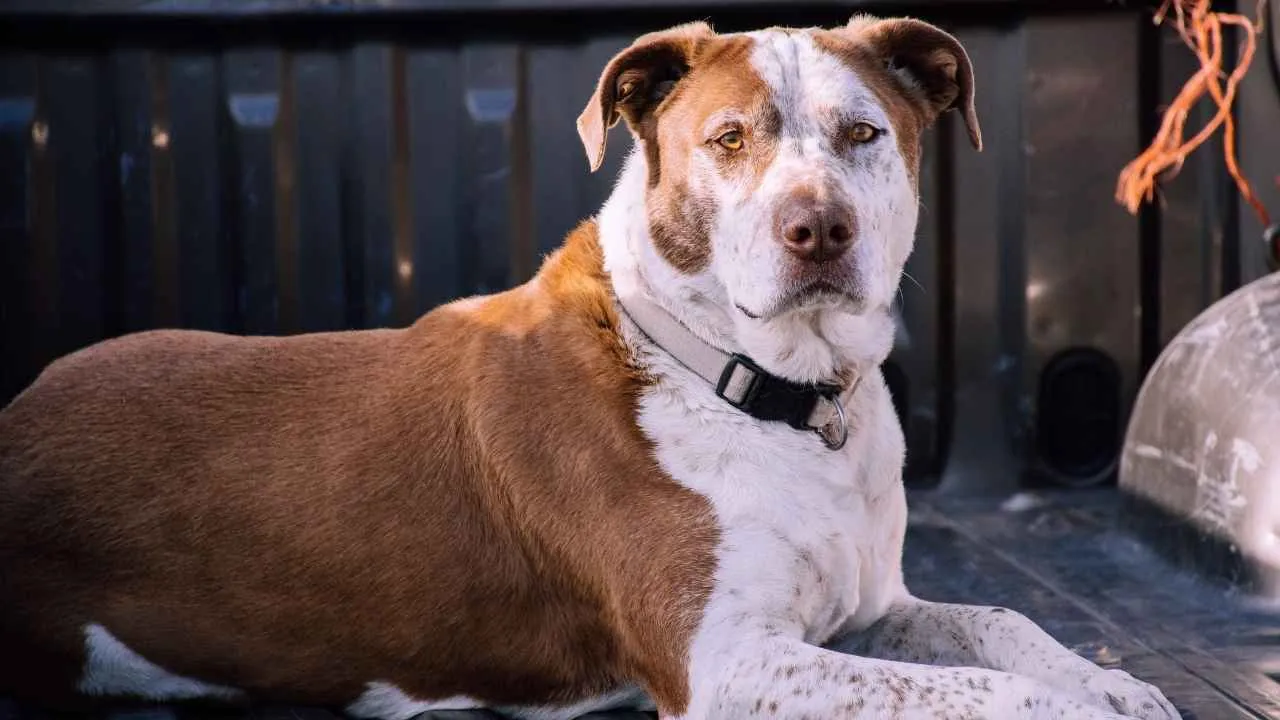
Bred for endurance and versatility, the American Pit Bull Terrier is a muscular, medium-sized dog with an athletic frame and immense physical prowess. Descended from bulldogs and terriers, they originally served in demanding roles such as hunting dangerous game and later became known for their stamina in the dogfighting pits—though today, these energetic dogs thrive in more positive roles.
Males typically weigh between 35 and 60 pounds and stand around 18 to 21 inches tall. With a broad, deep head, tight-fitting coat that comes in various colors (excluding merle), and a springy, agile gait, they exude power and grace. Their temperament is affectionate, confident, and eager to please, making them both a loyal companion and a tireless worker.
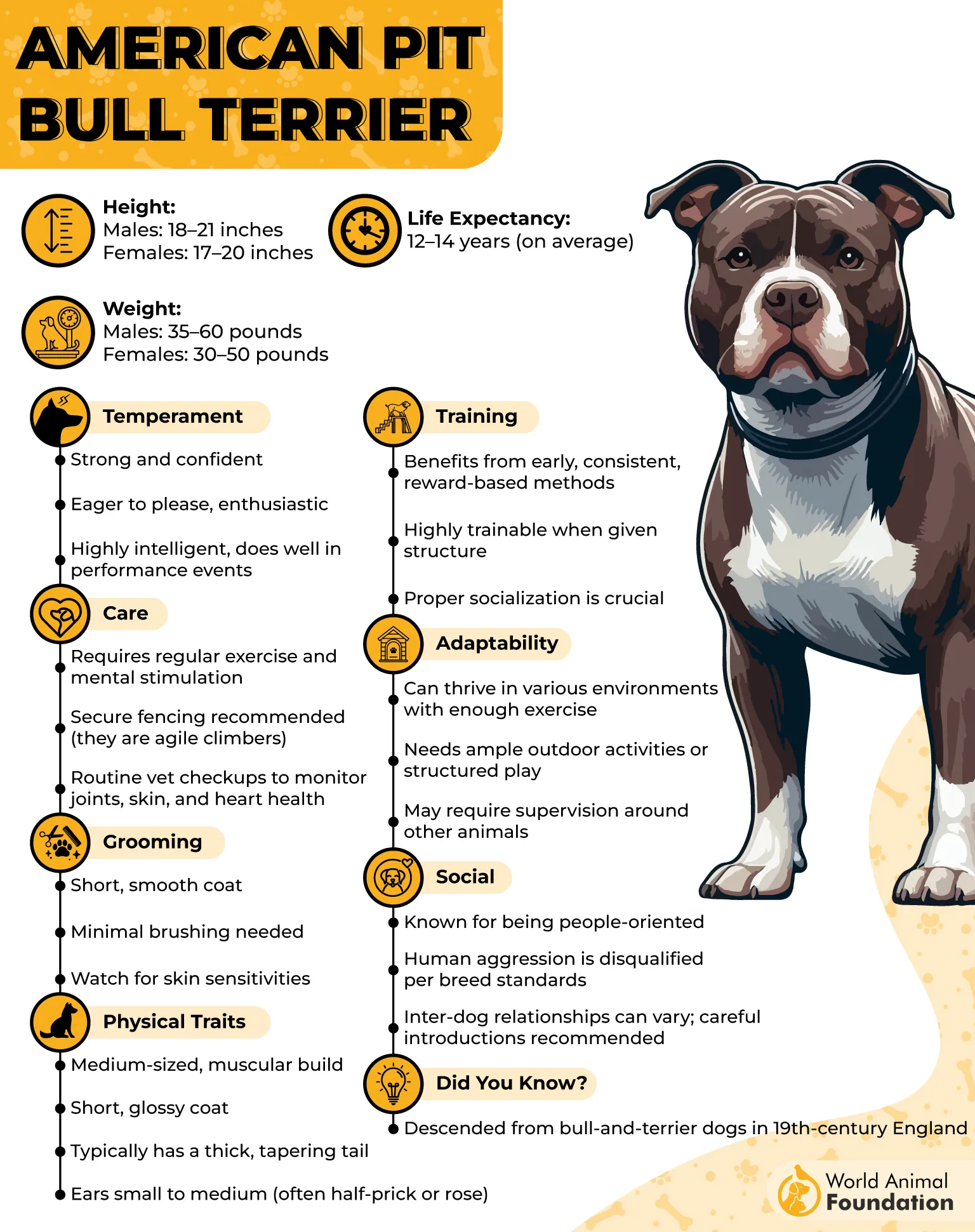
Exercise
American Pit Bull Terriers demand consistent physical and mental stimulation. At least 45 minutes to an hour of exercise daily is essential to keep them satisfied.
They enjoy high-energy activities such as fetch, agility, and long walks, which help channel their stamina in positive ways. When under-stimulated, they can become restless or destructive, making active play a crucial part of their routine.
Fact: The American Pit Bull Terrier was officially recognized by the United Kennel Club in 1898, honoring its roots as a performance-bred working dog.
8. English Springer Spaniel
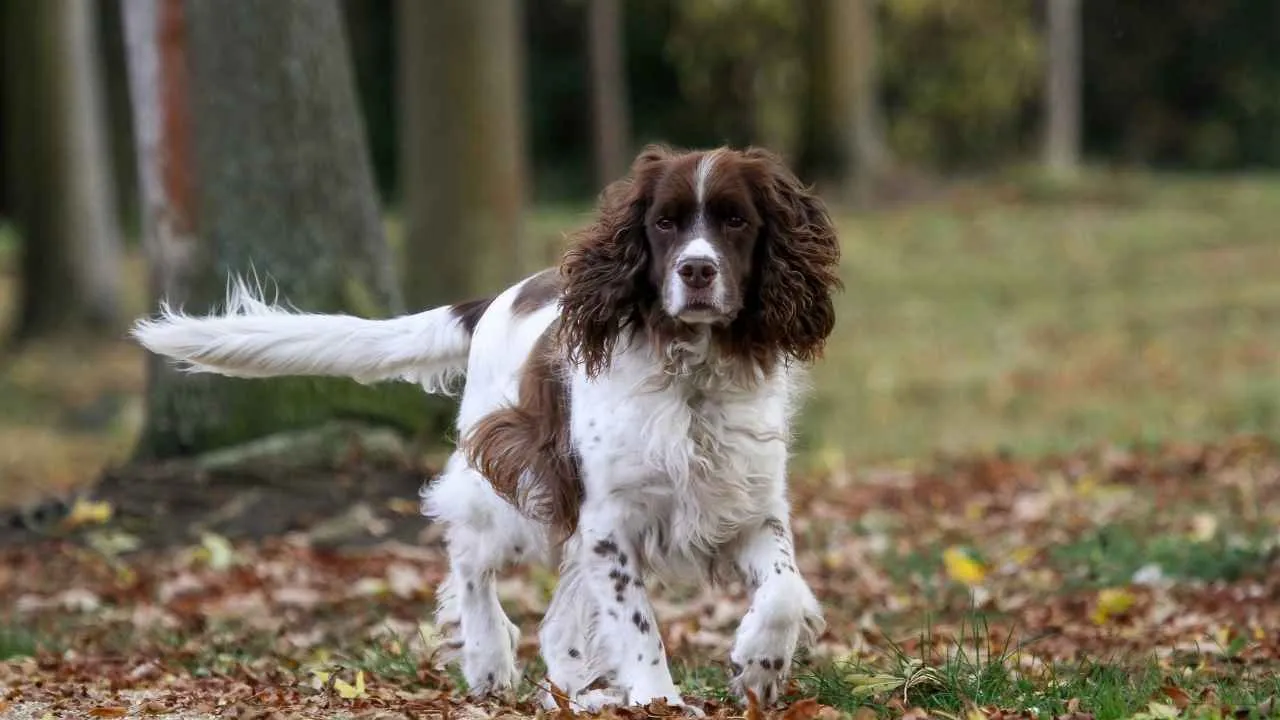
Bred for endurance and intelligence, the English Springer Spaniel is a medium-sized sporting dog that stands between 19 and 20 inches tall and weighs 40 to 50 pounds. This breed traces its roots to England, where it was originally developed to “spring” game from dense brush for hunters.
Springers have a sturdy build, long ears, and soulful eyes, with coats that may appear in various combinations of black, liver, white, or tricolor.
Their double coat and smooth, fluid movement are optimized for stamina and efficiency in the field. With a life expectancy of 12 to 14 years, they are known for their friendly temperament and eagerness to work.
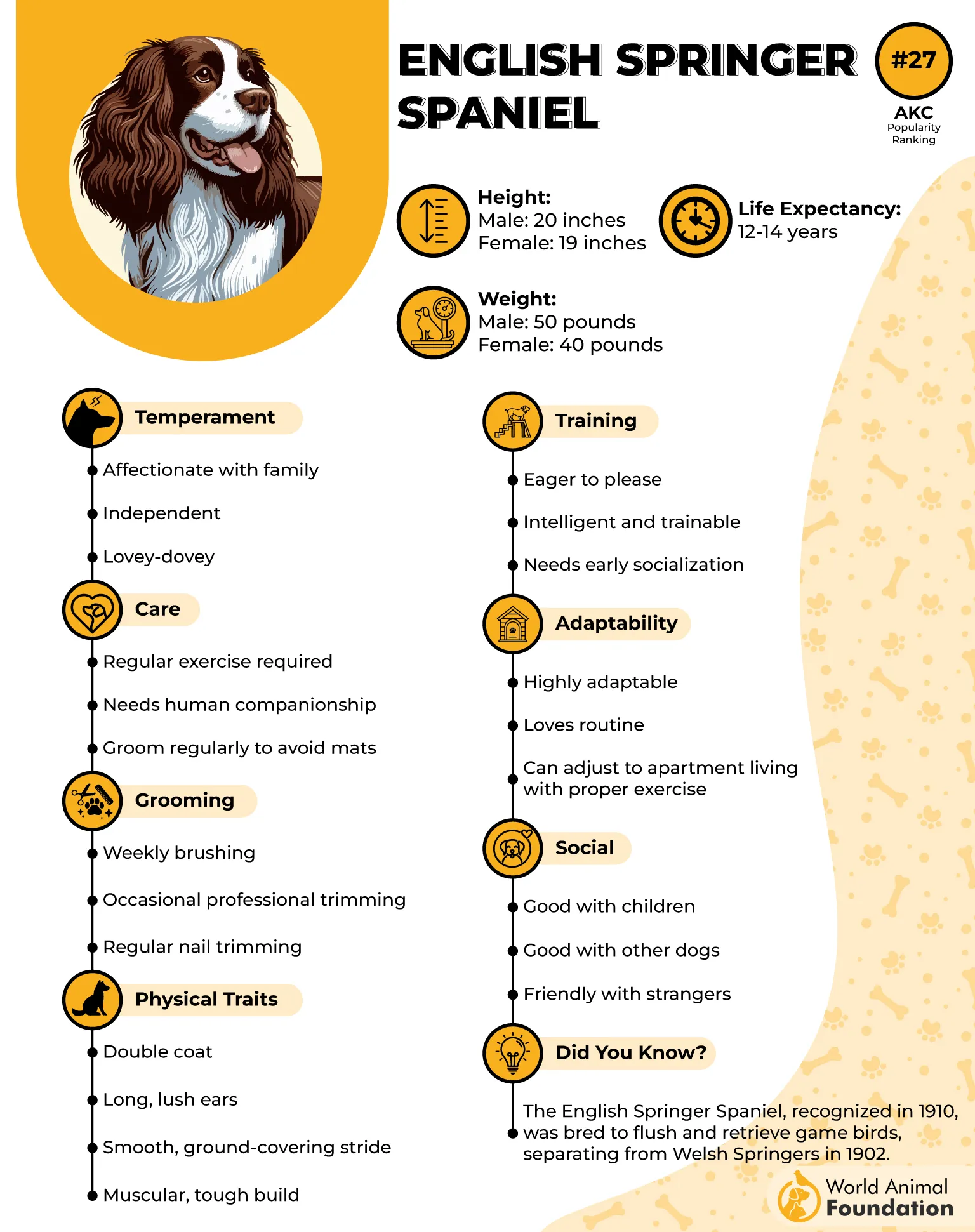
Exercise
Springers are bursting with energy and need at least 1.5 to 2 hours of daily activity to stay mentally sharp and physically satisfied. Ideal routines include hiking, jogging, and play sessions such as fetch or tug.
Dog sports like flyball and agility also offer excellent outlets for their vigor and intelligence. Without sufficient physical and mental engagement, these dogs can become restless and misbehave.
Fact: Ranked 13th in Stanley Coren’s “The Intelligence of Dogs,” English Springer Spaniels are among the most intelligent and obedient working breeds.
9. Belgian Malinois
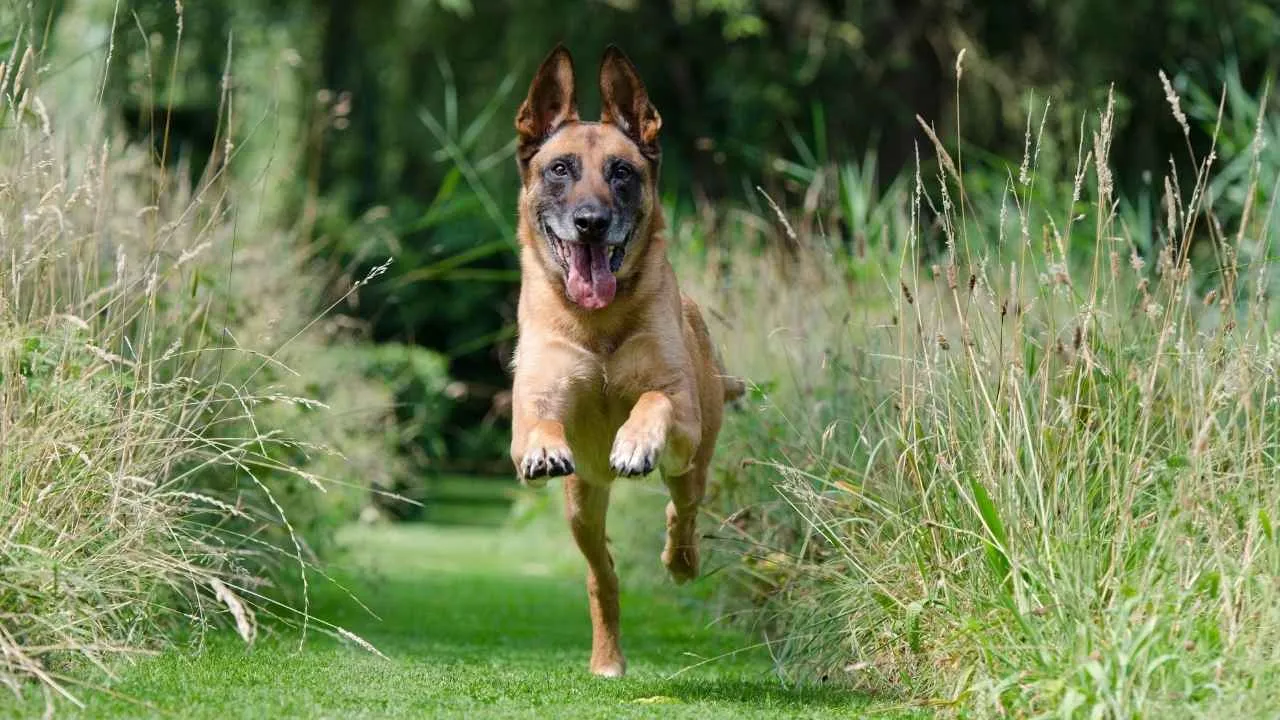
The Belgian Malinois, one of four varieties of the Belgian Shepherd dog, is revered for its sharp intellect, energetic nature, and strong work ethic. Developed in Belgium as a herding and protection dog, it has since excelled in roles such as military service, police work, and search-and-rescue.
Males typically stand 24 to 26 inches tall and weigh 60 to 80 pounds, while females range from 22 to 24 inches and weigh slightly less.
This sleek, squarely built dog features a short, weather-resistant coat in shades of fawn to mahogany, accented by a black mask and alert, chocolate-brown eyes. With a proud stance and confident presence, the Malinois is known for its dedication and versatility.
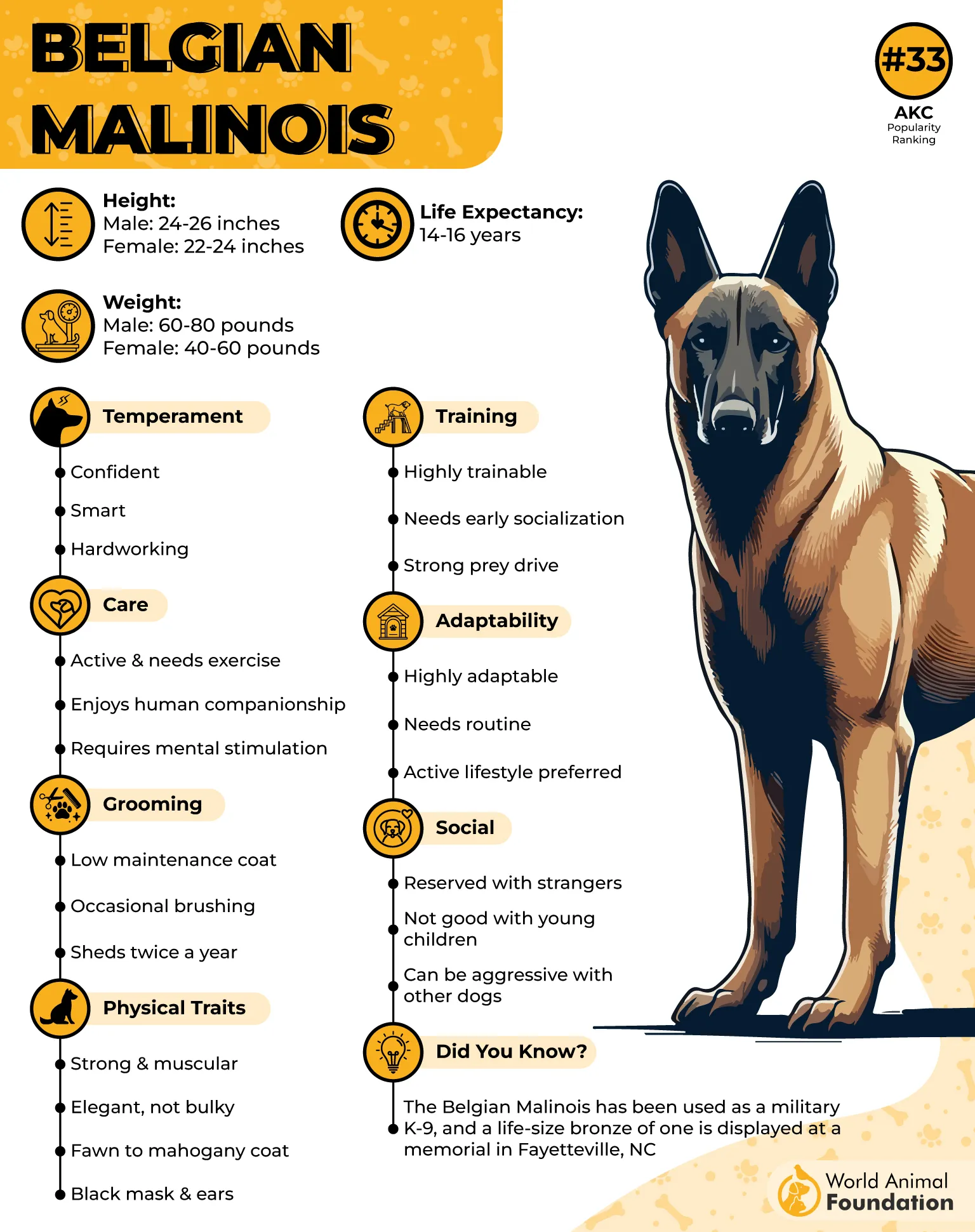
Exercise
Belgian Malinois need rigorous daily activity—at least 40 to 60 minutes—with their humans. Ideal outlets include agility, herding, advanced obedience, or scent-tracking exercises.
They thrive when physically and mentally challenged, and backyard time alone isn’t enough. This breed craves both companionship and purpose, making them ideal for experienced dog owner who lead active lifestyles.
Fact: Belgian Malinois have served in elite military units around the world and are among the top choices for security and tactical operations due to their trainability and exceptional endurance.
Conclusion
When it comes to boundless endurance and an unrelenting zest for activity, certain dog breeds are truly in a league of their own. From rugged herders to elite working canines, these high-energy companions thrive on movement, making them ideal for athletic owners and adventurous lifestyles. Breeds like the border collie, Siberian husky, and German shorthaired pointer are celebrated for their extraordinary stamina and are known to flourish in environments that challenge both their bodies and minds.
Historically, breeds such as sled dogs and carriage dogs were bred for physically demanding tasks—pulling loads through cold climates, escorting carriages over long distances, or tirelessly herding livestock across vast terrains.
Even today, dogs with roles in rescue, agility, and obedience carry forward this legacy of endurance. Whether you’re trekking through snow or exploring trails, these resilient breeds—some with a distinctive spotted coat—are sure to keep pace, offering loyalty, athleticism, and companionship that lasts the distance.


